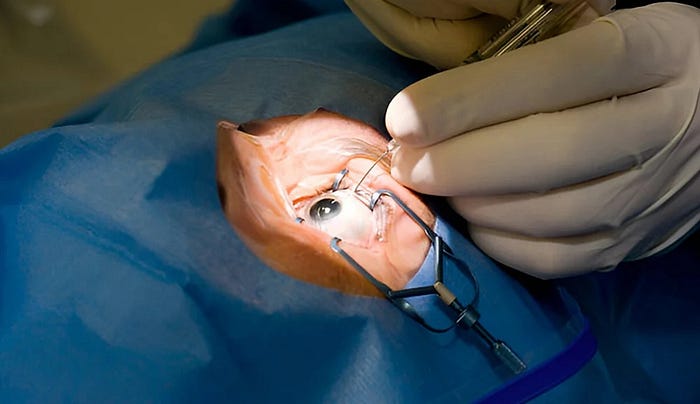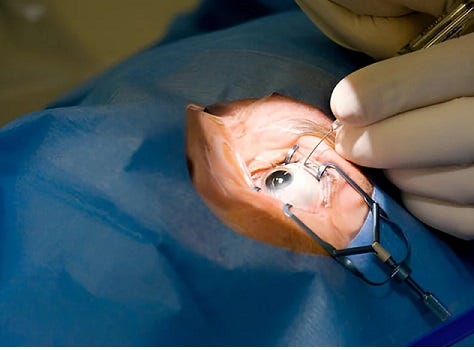Laser eye surgery has revolutionized the field of vision correction, providing millions of people around the world with a safe and effective solution to improve their vision and reduce or eliminate the need for glasses or contact lenses. With advanced technology and precise surgical techniques, laser eye surgery offers a long-lasting, life-changing alternative for individuals with refractive errors such as myopia (nearsightedness), hyperopia (farsightedness), and astigmatism. In this guide, we will explore the various types of laser eye surgery, how the procedure works, who is a good candidate, and what to expect during recovery.
Understanding Refractive Errors
Before diving into the specifics of laser eye surgery, it’s important to understand the common vision problems that these procedures aim to correct. Refractive errors occur when the shape of the eye prevents light from focusing directly on the retina, Laser Eye Surgery Treatment causing blurred vision.
Types of Refractive Errors
Myopia (Nearsightedness): In myopia, the eye is longer than normal or the cornea is too curved, causing light to focus in front of the retina. This results in clear vision up close, but distant objects appear blurry.
Hyperopia (Farsightedness): In hyperopia, the eye is shorter than normal or the cornea is too flat, causing light to focus behind the retina. This leads to blurry vision up close, but distant objects may still appear clear.
Astigmatism: Astigmatism occurs when the cornea or lens is irregularly shaped, causing light to scatter or focus unevenly. This results in blurred or distorted vision at all distances.
Presbyopia: Presbyopia is an age-related condition that typically affects people over the age of 40, where the eye’s natural lens becomes less flexible, making it difficult to focus on close objects.
Laser eye surgery addresses these refractive errors by reshaping the cornea, the clear front part of the eye, to correct how light is focused onto the retina.
Types of Laser Eye Surgery
There are several different types of laser eye surgery, each designed to correct refractive errors and improve vision. The most common procedures include LASIK, PRK, LASEK, and SMILE. Let’s take a closer look at each one:
1. LASIK (Laser-Assisted In Situ Keratomileusis)
LASIK is the most popular and widely performed laser eye surgery. It is known for its quick recovery time and minimal discomfort. The procedure involves creating a thin flap in the cornea, using either a microkeratome blade or a femtosecond laser. The surgeon then lifts the flap and uses an excimer laser to reshape the cornea, correcting the refractive error. The flap is then repositioned, where it naturally heals without the need for stitches.
Benefits of LASIK:
- Quick recovery, with most patients experiencing improved vision within 24 hours.
- Minimal discomfort during and after the procedure.
- High success rate with long-lasting results.
Who is a Good Candidate?:
LASIK is ideal for individuals with mild to moderate myopia, hyperopia, or astigmatism. Candidates must have healthy eyes, a stable prescription, and adequate corneal thickness.
2. PRK (Photorefractive Keratectomy)
PRK is one of the earliest forms of laser eye surgery and is a good alternative for individuals who may not be suitable candidates for LASIK. Unlike LASIK, PRK does not involve creating a corneal flap. Instead, the surgeon removes the outer layer of the cornea (epithelium) and then uses a laser to reshape the underlying tissue. The epithelium naturally regenerates over the course of a few days after surgery.
Benefits of PRK:
- Suitable for individuals with thin corneas or those who are not eligible for LASIK.
- No risk of flap complications, since no flap is created.
- Effective for correcting mild to moderate refractive errors.
Who is a Good Candidate?:
PRK is ideal for individuals with thinner corneas, dry eyes, or those who participate in contact sports where a LASIK flap could be at risk. Candidates should have a stable prescription and overall healthy eyes.
3. LASEK (Laser-Assisted Sub epithelial Keratomileusis)
LASEK is similar to PRK, but instead of completely removing the outer layer of the cornea, the surgeon loosens and gently moves it aside before reshaping the cornea with a laser. The epithelium is then replaced, where it heals over time. LASEK is often recommended for individuals who need a less invasive procedure than LASIK.
Benefits of LASEK:
- Offers the benefits of both LASIK and PRK, with a lower risk of flap-related complications.
- Suitable for patients with thin corneas or dry eyes.
- Provides good long-term results.
Who is a Good Candidate?: LASEK is suitable for individuals with thin corneas, those with higher degrees of refractive errors, or those at risk of trauma to the eyes due to sports or occupational hazards.
4. SMILE (Small Incision Lenticule Extraction)
SMILE is a newer and minimally invasive laser eye surgery that involves creating a small incision in the cornea through which the surgeon removes a tiny piece of corneal tissue (lenticule) to reshape the cornea. Unlike LASIK, no flap is created, and the procedure is performed using only a femtosecond laser.
Benefits of SMILE:
- Minimally invasive, with a small incision and no flap.
- Less disruption to the corneal nerves, leading to a lower risk of dry eyes post-surgery.
- Fast recovery and less discomfort compared to PRK.
Who is a Good Candidate?:
SMILE is primarily recommended for individuals with mild to moderate myopia and astigmatism. Candidates must have stable vision and healthy eyes.
The Laser Eye Surgery Process
1. Pre-Surgery Consultation
Before undergoing laser eye surgery, patients must undergo a comprehensive eye exam to determine their suitability for the procedure. This exam includes measuring corneal thickness, pupil size, refractive error, and the overall health of the eyes. The surgeon will discuss the different laser surgery options and recommend the most suitable one based on the patient’s needs.
2. The Surgery Day
Laser eye surgery is typically an outpatient procedure that takes about 15 to 30 minutes to complete for both eyes. Here's what to expect:
- Preparation: The surgeon will apply numbing eye drops to ensure the patient feels no discomfort during the procedure. A device will be used to keep the eyelids open.
- Laser Reshaping: The surgeon will either create a flap (in LASIK) or remove the surface layer of the cornea (in PRK/LASEK) before using a laser to reshape the cornea.
- Completion: After the cornea is reshaped, the surgeon will replace the flap or allow the surface layer to heal naturally. A protective shield may be placed over the eyes to prevent accidental rubbing.
3. Post-Surgery Recovery
Recovery after laser eye surgery is generally quick, though it varies depending on the procedure:
- LASIK Recovery: Most patients experience improved vision within 24-48 hours. Mild discomfort, such as dryness or sensitivity to light, may occur but typically resolves within a few days.
- PRK/LASEK Recovery: Recovery takes a bit longer, with most patients noticing improved vision within a week or two. Full healing may take up to a month as the corneal surface regenerates.
- SMILE Recovery: Recovery is quick, similar to LASIK, with most patients noticing improvements within a few days.
During recovery, patients should avoid rubbing their eyes, swimming, or engaging in strenuous activities. It is important to follow all post-operative instructions provided by the surgeon and attend follow-up appointments to ensure proper healing.
Potential Risks and Side Effects
While laser eye surgery is generally safe and effective, it is important to be aware of potential risks and side effects, which may include:
- Dry Eyes: Some patients experience dry eyes after surgery, though this is usually temporary and can be managed with lubricating eye drops.
- Glare, Halos, or Starbursts: These visual disturbances, especially at night, are common in the initial recovery period but usually fade over time.
- Under correction or Overcorrection: In rare cases, the eye may not be fully corrected, requiring an enhancement procedure.
- Flap Complications: In LASIK, the flap may not heal properly, though this is a rare occurrence.
Conclusion
Is Laser Eye Surgery Right for You?
Laser eye surgery offers a life-changing opportunity to improve your vision and reduce or eliminate the need for glasses or contact lenses. It is a safe and effective procedure with a high success rate, and for many people, it can provide long-lasting results. If you are considering laser eye surgery, Eye Specialist in Delhi it is essential to have a thorough consultation with an experienced eye surgeon to determine if you are a good candidate and which procedure is best suited to your needs.
With advancements in laser technology, options like LASIK, PRK, LASEK, and SMILE provide a range of solutions for individuals with refractive errors. Whether you’re nearsighted, farsighted, or have astigmatism, laser eye surgery can help you achieve clearer, sharper vision and enhance your quality of life.







